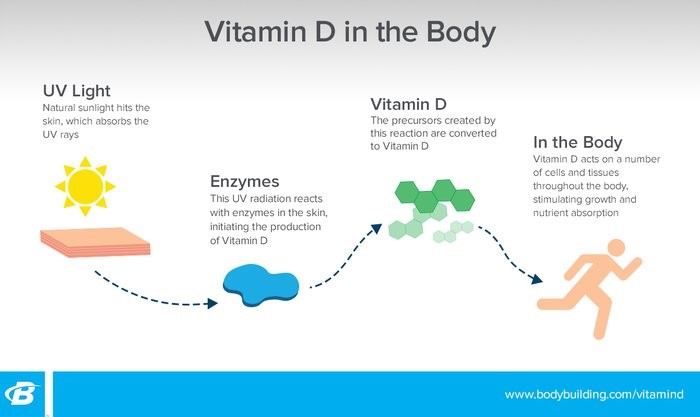Vitamin D: nutrition and sunshine to keep us healthy
Increase your daily consumption of this micronutrient with our suggestions of foods rich in Vitamin D

About 88% of the population of the world is Vitamin D deficient.
This statistic, which shows that the majority of the population of the world lacks Vitamin D, may come as a shock to many people. After all, when you consider the number of people who live in sunny climates, you would expect the percentage to be much lower. However, even people living in Mediterranean countries can present low levels of Vitamin D, and in fact, they actually present lower levels of the micronutrient than people in Nordic countries.
There are several theories about why this could be, one of which is that people simply do not get the sun exposure they need. Most people aren’t getting the recommended 10-15 minutes of sun exposure per day because our lifestyles prevent us from doing so. It therefore means that we are not getting the levels of Vitamin D we need to function healthily.
But why are we worried about a lack of Vitamin D? What does it do? And what is the best way to get the right amounts of it?
Vitamin D is extremely important in the prevention of various diseases and is essential for healthy aging. In this article we’ll tell you all about this overlooked nutrient – one that plays an essential part in keeping us healthy.
Table of Contents
The dangers of a Vitamin D deficiency
Get Vitamin D through nutrition
A summary of everything we’ve learned about Vitamin D (Infographic)
The ‘Sunshine’ vitamin
You probably already know that Vitamin D is essential for keeping bones strong and healthy. But what is Vitamin D and what does it do? Find out in our latest article!
Vitamin D is a fat-soluble based micronutrient that presents itself in the form of Vitamin D2-calciferol and Vitamin D3-cholecalciferol. It is also known as the vitamin of the Sun because the Sun is a major source of Vitamin D. However, you can also find this micronutrient in food – in animal products (Vitamin D3) and plant-based products (D2) – although your body doesn’t absorb these as well as Vitamin D obtained directly from sunlight.

We hear a lot about Vitamin D deficiency, but what is talked about less often is the effects a Vitamin D deficiency could have on the body. The most common negative effect is related to calcium absorption. Low levels of Vitamin D in the body means our bodies can’t produce a hormone called calcitriol, which is responsible for calcium absorption. Decreased absorption of calcium leads to an increased risk of osteoporosis. Take a look at the image below to better understand what we’re talking about.

Vitamin D health benefits
In the same way that plants absorb the Sun’s rays through photosynthesis, our body uses sunlight to help the skin produce Vitamin D. It’s essential for building strong bones, strengthening the immune system and preventing various diseases.
What you may not know is that Vitamin D is one of the most important vitamins for your long-term health, so having healthy levels of it leads to healthy aging. Unlike other nutrients, it acts more like a hormone than a vitamin, directly affecting the genes responsible for controlling nearly all aspects of cell development.
There are several benefits of having enough Vitamin D in your body, but the most important one is that it can help to prevent certain diseases and conditions that become more common as we age. Here are some examples:
- Mental disorders: Vitamin D is an important nutrient for our mental well-being. Light therapy, which helps increase the levels of Vitamin D in the body, is used to help treat people who suffer from seasonal depression (TAS), schizophrenia, depression and other mental disorders;
- Blood pressure: according to several studies, people with hypertension who were exposed to ultraviolet light not only increased their levels of Vitamin D by about 180%, but also lowered their blood pressure to normal levels;
- Risk of cancer: maintaining high levels of Vitamin D can reduce your risk of breast cancer, colorectal cancer, heart disease, stroke and arterial diseases;
- Immune System: low levels of Vitamin D put people at risk of infections such as colds and the flu. Vitamin D helps the cells in your immune system destroy the bacteria that cause tuberculosis. In addition, it increases the production of insulin and helps your heart cells to contract;
- Strong bones: Vitamin D helps your body absorb calcium, a nutrient important for our bones. It can also help treat the symptoms of osteoporosis.

The dangers of a Vitamin D deficiency
A lack of Vitamin D is associated with a higher risk of infections and autoimmune, oncologic and cardiovascular diseases, manifesting itself through symptoms such as:
- Fatigue
- muscle pain
- lack of energy
- skin and mouth dryness
among other symptoms.
Although the body can create Vitamin D, there are many reasons why a deficiency can occur. For example, if you have darker skin or use sunscreen, you reduce your body’s ability to absorb the UV rays needed to produce Vitamin D.
An SPF 30 sunscreen can reduce the body’s ability to synthesize the vitamin by 95%, and to start producing Vitamin D, the skin should be directly exposed to sunlight, not covered by clothing.
Symptoms of a Vitamin D deficiency
The best way to find out if you have a Vitamin D deficiency is to do a blood test that will measure the level of Vitamin D3 through 25 (OH) D. However, there are some signs that can alert you that you have a Vitamin D deficiency. Excessive fatigue, body or muscle aches, lack of balance, inefficiency of the immune system or weight changes are some of the symptoms that should set alarm bells ringing for you.
But how do you know if you’re taking the right amount of Vitamin D? The table below shows the recommended daily dose of Vitamin D by age:

Source: WorthyHealth.com
Get Vitamin D through nutrition
You can get Vitamin D in two ways: from your diet or by cutaneous synthesis (which you get from sun exposure). Both are essential in maintaining our bone health and our physical and mental well-being. A growing number of studies have shown that a lack of Vitamin D in the body is related to the development of cardiovascular diseases, osteoporosis, diabetes, cancer and various autoimmune diseases.

These same studies claim it is possible to combat a lack of Vitamin D in our bodies with:
- Sunlight – because it promotes Vitamin D synthesis from cholesterol in the skin
- a diet rich in the nutrient
As such, we suggest you get some sun exposure, and eat some of the foods that will help you enrich your diet with Vitamin D:
1) Cod liver oil
1 tsp: 440 IU (over 100% of your RDI)
2) Sardines
100g: 164 IU (41% of your RDI)
3) Salmon
100g: 400 IU (100% of your RDI)
4) Mackerel
100g: 400 IU (100% of your RDI)
5) Tuna
100g: 228 IU (57% of your RDI)
6) Cold Milk
1 cup: 98 IU (24% of your RDI)
7) Caviar
1 ml: 33 IU (8% of your RDI)
8) Eggs
1 large egg: 41 IU (10% of your RDI)
9) Mushrooms
1 cup: 2 IU (1% of your RDI)
In addition to getting sunlight (and checking with your doctor first) eating two of these Vitamin D-rich foods could help you get the amount of Vitamin D you need. Be careful, however, with the amount of time you spend in the sun to avoid damaging your skin. Remember that 15 minutes is enough!
An infographic about Vitamin D
In this article we’ve mentioned lots important information about Vitamin D. We therefore decided to put it all together in an infographic that contains basic indications about this micro-nutrient, as well as information about how much Vitamin D people in different countries consume.


 USA
USA